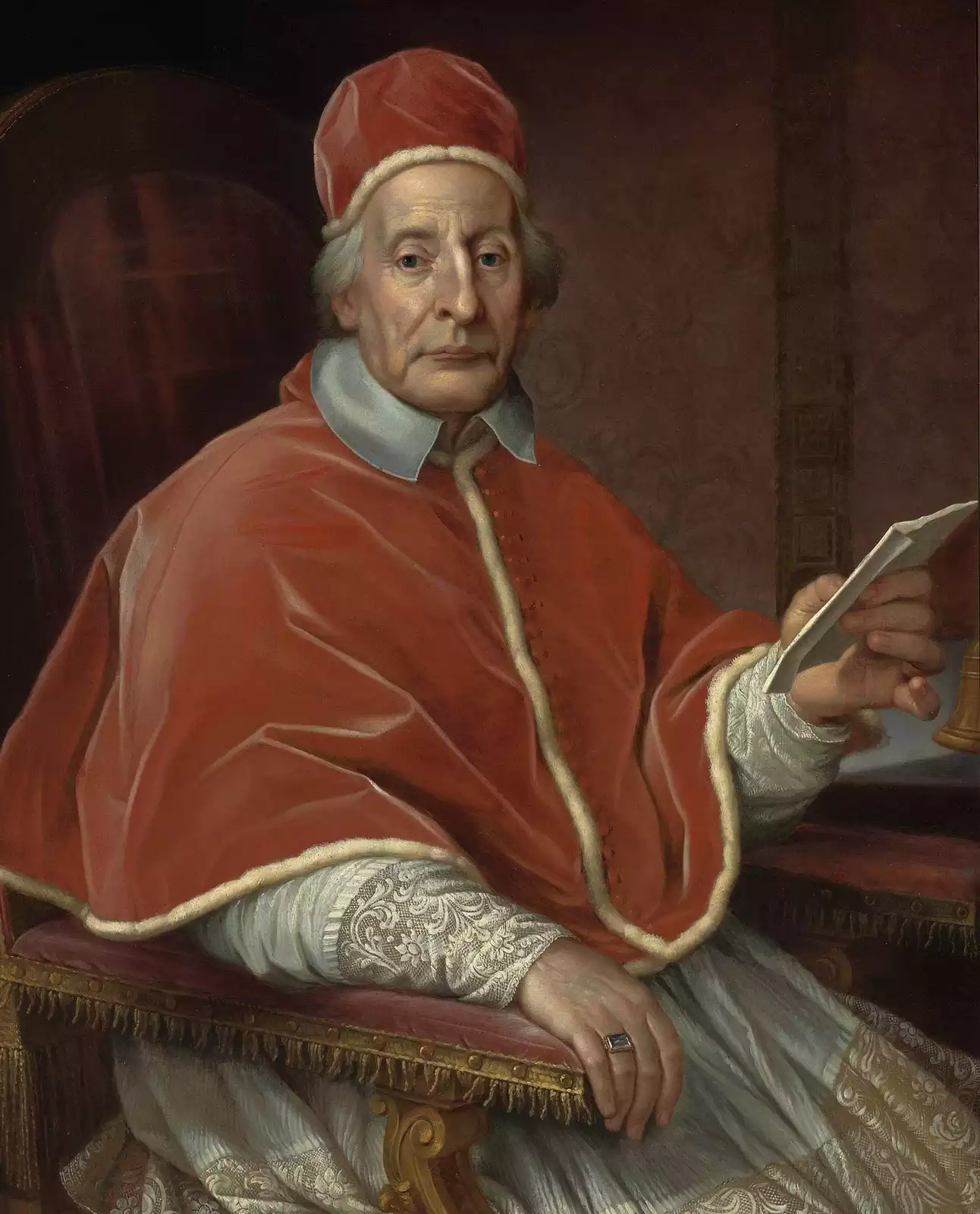
Pope Clement XII, born Lorenzo Corsini (1652-1740), orchestrated a papacy marked by artistic patronage and infrastructural advancements. His era, nestled in the heart of the 18th century, witnessed a fusion of spiritual leadership and cultural enrichment, underlining his legacy as a bridge between eras. This intriguing figure not only fortified the foundations of the Roman Catholic Church but also left an indelible mark on Rome’s architectural heritage, a testament to his visionary foresight and unwavering dedication to faith and culture.
Architectural Visionary – The Edification of Rome
In an era where the Roman skyline was a canvas for the grandest of visions, Pope Clement XII emerged as a paramount figure, orchestrating an architectural revolution that reshaped the Eternal City. His reign, a symphony of stone and spirituality, saw the birth of structures that stood as testaments to his commitment to the Roman Catholic ethos and the enrichment of Rome’s cultural tapestry.
The pontificate of Pope Clement XII was distinguished by audacious projects, one being the commissioning of the majestic Trevi Fountain. This grandiose masterpiece, more than just a marvel of baroque artistry, symbolized the pontiff’s dedication to melding aesthetic grandeur with public utility. The fountain, with its intricate sculptures and thunderous waters, was not merely a visual spectacle; it was a social statement, a beacon of the Pope’s vision for a city that harmonizes beauty with the welfare of its inhabitants.
Simultaneously, the renovation of the Basilica di San Giovanni in Laterano under his directive further cemented his legacy as an architectural patron. This project was not just an embellishment of a religious site; it was a renewal of a symbol, a rejuvenation of the spiritual nucleus of the city. Pope Clement XII’s touch transformed this ancient edifice, infusing it with a renewed aura of sanctity and historical reverence, thus reasserting the church’s prominence in the hearts and the skyline of Rome.
Each stone laid and each column erected during his reign narrated a story of ambition and piety. These structures, more than mere physical entities, were embodiments of the Pope’s profound understanding of his dual role as a spiritual leader and a custodian of cultural heritage. As the city of Rome basked in the architectural renaissance ignited by Pope Clement XII, it became evident that his vision was not confined to the ephemeral present; it was a legacy etched in marble and faith, destined to inspire generations.
Spiritual Stewardship and Cultural Patronage of Pope Clement XII
The tenure of Pope Clement XII was not solely defined by its architectural triumphs but also by its profound spiritual and cultural influence. As a steward of faith, his papacy was a testament to the harmonious blend of devout leadership and cultural enrichment. This period marked a significant era in the Roman Catholic Church, where spiritual depth and artistic expression coalesced under his auspices.
One of the most notable accomplishments of Pope Clement XII was his fervent support for the arts, which he viewed not as mere embellishment but as a medium to inspire and elevate the soul. His patronage extended to artists and scholars alike, fostering an environment where creativity and piety could flourish in tandem. The establishment of the Capitoline Museums under his guidance was a monumental achievement, positioning the Vatican not only as a spiritual hub but also as a custodian of human heritage and artistic excellence.
Moreover, Pope Clement XII’s papacy was marked by significant religious undertakings, reflecting his unwavering commitment to the spiritual welfare of his flock. The establishment of the hospice of San Michele a Ripa Grande exemplified his dedication to social welfare and his deep understanding of the church’s role in addressing societal needs. This institution was not merely a shelter but a beacon of hope, demonstrating the church’s active engagement in uplifting the less fortunate.
As Rome basked in the cultural renaissance ignited by Pope Clement XII, the church too experienced a rejuvenation. His pontificate, a confluence of spiritual depth and cultural richness, paved the way for an era where faith and artistry coexisted, each enriching the other. The legacy of him, therefore, was not confined to the edifices that adorned the city or the artworks that graced the galleries; it was deeply embedded in the spiritual and cultural ethos of the era, echoing through time as an enduring testament to his visionary leadership.
Pope Clement XII’s tenure, intricately woven with cultural and spiritual threads, profoundly shaped Rome and the Roman Catholic Church. His vision, transcending mere ecclesiastical leadership, fostered a legacy of artistic brilliance and devout stewardship, echoing through history as a testament to his transformative papacy.
References
Adams, J. (2010). “Pope Clement XII: The Architect of Rome,” Cambridge University Press.
Harris, M. (2012). “The Papacy and the Arts: Clement XII’s Rome,” Harvard University Press.
Herbert Thurston. (1927). “Pope Clement XII and Freemasonry,” Thought: Fordham University Quarterly, Volume 2, Issue 1, June 1927, Pages 134-147
Richardson, C. (2015). “Clement XII and the Roman Catholic Church,” Yale University Press.
Woods, L. (2011). “Rome’s Spiritual Steward: Pope Clement XII,” Stanford University Press.
